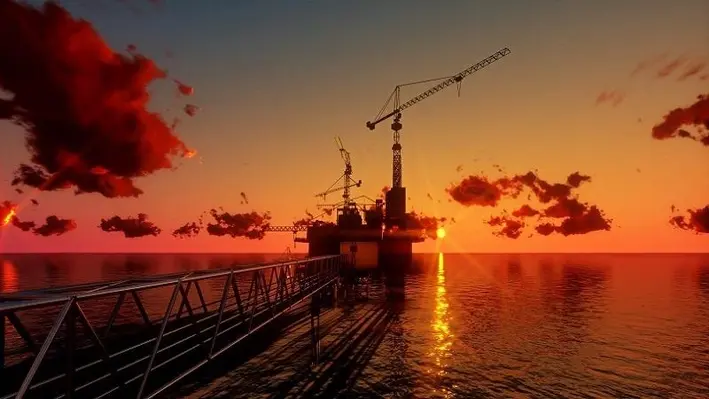

Baker Hughes has launched the MS-2 Annulus Seal, designed to save substantial operational rig costs by reducing rig trips.
The new integrated sealing solution, the latest technological development to the MS-SN, has already been adopted by multiple customers in North and South America.
The MS-2 Annulus Seal integrates with Baker Hughes’ existing MS-800 wellhead system and helps to lower the cost of well construction and intervention, expands intervention options and ensures security and confidence of well integrity in challenging conditions.
“We constantly strive for technological optimisation and delivering the most advanced solutions to our subsea customers,” said Neil Saunders, Executive Vice President of Oilfield Equipment at Baker Hughes. “Through our new MS-2 Annulus Seal, we are helping to transform the subsea market and are developing quality technology that delivers long-term value, reliability and efficiencies for subsea customers.”
The MS-2 can be installed in a single trip, with an integrated lock ring that results in improved rig efficiency by providing immediate lockdown of up to 2mn pounds force without the need for a second trip, saving rig time. The MS-2 also provides easier access to wells, with no need for supplemental lockdown devices. It is tested to 20,000 psi, and to 200 load cycles ensuring life-of-field reliability and further demonstrating the seal integrity.


C-Innovation, LLC (C-I), an affiliate of Edison Chouest Offshore (ECO) and its family of companies, have signed a two-year contract for continued Riserless Light Well Intervention (RLWI) services onboard the Island Venture offshore support vessel.
The new contract follows a previous agreement in which the Island Venture performed interventions on multiple deepwater wells in the Gulf of Mexico.
David Sheetz, C-Innovation’s Vice President, said, “This new award is a continuation of nearly three years of setting new standards in the RLWI space. We are constantly working to change the way the industry looks at RLWI work to increase production in this ever-changing market. We look forward to the next few years on this project, and we are already making plans to expand the offering, including numerous dock upgrades to facilitate even more efficient fluid handling and waste removals to minimise required between-wells maintenance time.”
With no safe vertical access to several subsea wells under a platform, the C-I Subsea Projects Group was able to find a solution by utilising a well service jumper to perform well interventions. This collaborative effort between C-I and the operator allowed C-I to perform the intervention without disrupting the platform’s operations.
George Wilson, C-I’s RLWI project manager, commented, “C-I is committed to ensuring the continual improvement of the quality, health, safety and environmental aspects of its operations and services. The two-year RLWI work is no exception: with over one million man-hours, C-I had zero recordable incidents. So far this year, C-I has clocked over 135,000 hours with no recordables.”
Sheetz added, “The contract award for additional RLWI work is a credit to the entire RLWI team. Our team continues to provide creative solutions and methodologies to perform interventions that have not been achievable from a conventional RLWI approach. The collaboration of various subsea disciplines within our group has contributed to the successes, and our offshore teams continue to deliver on every execution that comes their way. C-I’s subcontractors, Halliburton, Baker Hughes and Caltex Oil Tools, were also key to the new award. I am extremely proud to work with some of the brightest people in our industry.”


C-Innovation, an affiliate of Edison Chouest Offshore (ECO) and its family companies, is celebrating its 15-year anniversary.
This milestone was reached by continuing to provide its customers with the most advanced remotely operated vehicles (ROV) systems and industry-leading ROV services. Such offerings have seen the company operate across the globe alongside major operators such as bp.
Since its foundation in 2007, the company has grown into the largest owner and operator of Schilling Robotics ROV systems in the world, with a fleet of 57 work class ROV systems. In addition to ROV services, it has now expanded into providing AUV, offshore survey, pipeline and well intervention services – recently demonstrated with the award of a light well intervention contract with a major operator in the Gulf of Mexico.
The addition of these services has steadily expanded C-Innovation’s footprint on the oil and gas industry.
Richard Bourque, Chief Operating Officer of C-Innovation, commented, “The past 15 years has seen multiple ROV companies come and go, while C-I has continued to grow and expand our offerings with additional vessels and advanced solutions.
“The key to remaining successful during a time when new competitors emerged and existing competitors faded away has always been the loyalty and hard work of our employees and the support of our clients. Reaching this 15-year milestone is proof to our clients and competitors that we are, and will continue to be, a leading ROV services provider in the oil and gas industry.”


Helix Energy Solutions Group, a leading provider of offshore energy services, has entered into a new multi-year contract with Shell Offshore to provide well intervention services in the Gulf of Mexico.
The three-year contract, commencing in March 2022, includes an anticipated 75 days utilisation per year with the option to add additional utilisation days.
Helix will provide either the Q4000 or Q5000 riser-based semi-submersible well intervention vessel, a 10k or a 15k Intervention Riser System (IRS), remotely operated vehicles, project management and engineering services to cover operations from fully integrated well intervention to fully integrated plug and abandonment well services.
The Q4000 and Q5000 well intervention vessels provide an optimal platform for a wide variety of tasks, including subsea well intervention, field and well decommissioning, installation and recovery of subsea equipment, well testing and emergency well containment.
Scotty Sparks, Helix’s Executive Vice President and Chief Operating Officer, commented, “Shell continues to be a valued customer of Helix. We appreciate their continued confidence in our fully integrated well intervention services, our commitment to safety and cost-effective and efficient solutions. We are confident in the efficiencies and value we bring to our customers, and this contract further signals the increasing demand for our services.”


ROCSOLE has received an Offshore Technology Conference (OTC) 'Spotlight on New Technology award' for its Intelligent Level Detection & Data Analytics for Sand Management.
In oil and gas facilities, sand production is an unwanted element. Robust and reliable sensors are critical for automated sand management systems to secure the proper functionality and avoid unexpected shutdowns or reduced production rate.
ROCSOLE utilises leading-edge tomographic technology, its Separator Profiler is a real-time non-radioactive monitoring solution that physically sees and measures separator's emulsion layer, improving separation efficiency by optimising residence time and resulting in higher quality output downstream.
“We are honored by this recognition. Innovation is not just a one-day job; this shows that the community appreciates the continuity of our innovative work shaping the future of energy and process control,” said Mika Tienhaara, Chief Executive Officer of ROCSOLE.
This is ROCSOLE’s third OTC Houston Spotlight award with the company first being recognised in 2020 for its Liquid In-Tank Inspection (LITI) product. This was swiftly followed, in 2021, with the prestigious award being bestowed on the company yet again, this time for its Deposition In-Line Inspection (DILI) system. It is the first Finnish company that has ever won the award
“Being rewarded the Spotlight on New Technology award three times in a row is a huge recognition for our technology. Being able to detect waste streams, deposits and solids build-up in real-time is providing considerable benefits for our customers to improve their efficiencies and ESG measures,” said Arto Voutilainen, Chief Technology Officer of ROCSOLE.
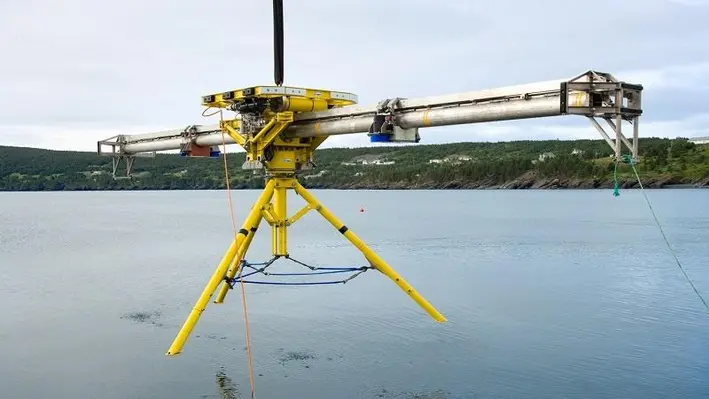

PanGeo Subsea, a subsidiary of Kraken Robotics, has been awarded a US$5mn contract by Couvillion Group for assistance with a decommissioning project in the Gulf of Mexico.
In 2004, a storm induced mudslide caused an offshore jacket to topple which has since been lying on the seafloor 150 metres down, with subsea conductors buried in around 60 metres of mud. PanGeo will use Acoustic Corer, its high-resolution sub-seabed imaging technology, to identify where the conductors are located in the debris field to provide valuable information for the plugging and abandonment of the well.
The campaign will start in Q2 2022 and will last for 90 days – representing the largest Acoustic Corer project undertaken by the company to date.
Moya Cahill, PanGeo’s CEO, said, “The Acoustic Corer delivers a unique solution to the industry that has been tried and proven by the Couvillion Group in a demonstration project in 2019. We are truly excited to return to this site and work with the Couvillion team to complete a full site investigation of the debris field.
Couvillion Group’s CEO, Timmy Couvillion, added, “We believe that PanGeo has the key to unlock the unknowns below the seafloor that will ultimately enable a successful plug and abandonment of the well.”
In addition to the debris survey, PanGeo has been issued a letter of intent for a multi-million Acoustic Corer campaign of 50 days for an offshore wind farm in the Baltic where it will be imaging boulders in the sub-seabed.
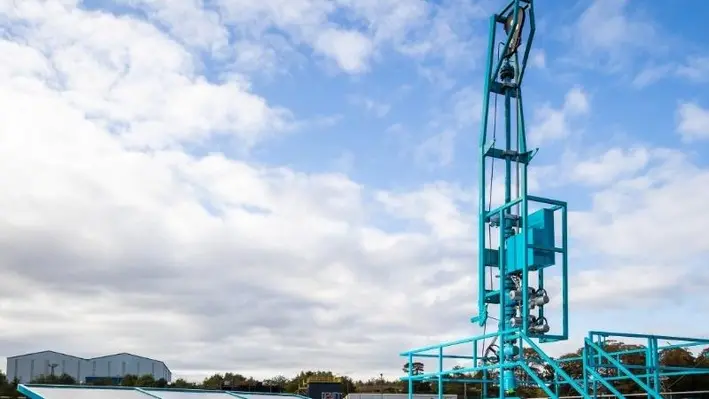
 Expro, an energy services provider headquartered in Houston, TX USA, was recognised with ‘Spotlight on New Technology Award’ at the 2022 Offshore Technology Conference (OTC) in Houston for its Autonomous Well Intervention System - Galea.
Expro, an energy services provider headquartered in Houston, TX USA, was recognised with ‘Spotlight on New Technology Award’ at the 2022 Offshore Technology Conference (OTC) in Houston for its Autonomous Well Intervention System - Galea.
This award highlights the latest and most innovative global technologies that are advancing and revolutionising the future of the energy industry. Galea was selected based on its autonomous technology and significant environmental, cost, and HSE impact beyond existing technologies.
According to Expro, Galea is the world’s first fully autonomous well intervention system that maximises production while reducing intervention costs, HSE risks, and the carbon footprint of operations. The system replaces larger, conventional, and more labour-intensive wireline rig-ups for a range of routine slickline operations. Galea can be configured in a variety of operating modes ranging from fully autonomous to manual to suit a range of applications on and offshore.
Galea deploys a tool string into the well either at regular intervals or as defined by the well conditions in fully autonomous mode. The system performs a pre-programmed intervention sequence in semi-autonomous mode, initiated locally or remotely. When in manual mode, quick rig-up intervention compared to conventional operations is enabled.
The system also reduces the impact of operations on the environment around the well site. A small self-contained intervention package located at the well site all year-round eliminates the need for repetitive environmentally disruptive wireline unit or truck operations required for traditional approaches.
Galea also features several fail-safe capabilities to ensure containment and elimination of potential wire breaks during interventions.
Expro’s Well Intervention and Integrity Vice President Max Tseplic said, “This prestigious award from our industry recognises not only one technology, but also Expro’s wider commitment to delivering cost-effective, innovative technologies and solutions, and what we consider to be best-in-class safety and service quality performance, as part of creating a more sustainable business and a lower carbon future.”
Expro North and Latin America Region Vice-President Toby Pitre added, “Enhancing our technology development remains a key focus for Expro. With a wide breadth of capabilities and expertise across the entire well lifecycle, we are fully focused on meeting changing industry demands.”
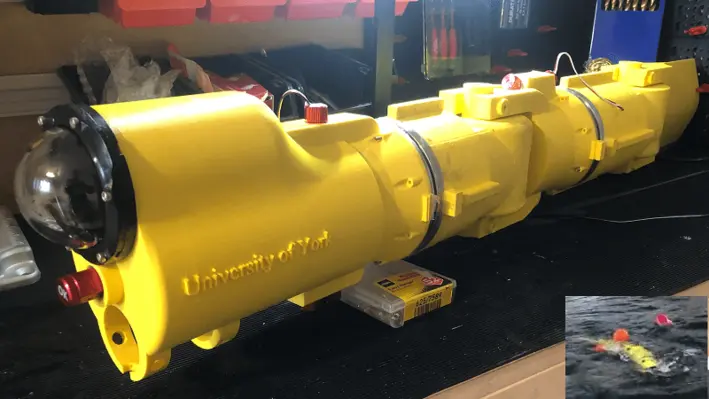

Verlume, a leader in intelligent energy management and storage technologies for the energy industry, and a consortium of partners have progressed on the development of an autonomous underwater robot that moves like a fish for offshore inspections.
The agile biomimetic autonomous underwater vehicle (AUV), named ‘RoboFish’, is made up of several self-contained modules with self-managed battery and actuator control for full-body, autonomous movement around underwater structures. It is capable of operating in harsh and hard-to-reach environments.
With the limited accessibility, manoeuvrability and environmental impact of remotely operated vehicles (ROVs) and some larger AUVs, inspection of structures in the underwater environment is complex, expensive, and reliant on human input.
The first RoboFish prototype was completed in summer 2020 and research to improve it and apply it to new applications is ongoing. Two conference papers and a journal paper have been published on the RoboFish prototype, with another journal paper due to be published this year on control of the swimming gait with machine learning.
Dr. Mark Post, Lecturer in Electronic Engineering at the University of York, commented, “Through the use of innovative electronics, actuation, networking technology and additive manufacturing techniques, we have been able to develop a modular robot that can move very precisely in challenging offshore environments. The collaborative contributions of many partners have been instrumental in creating a practical platform to further develop robotic technologies in this field.”
Verlume is playing a key role in the project, assisting with the development of an intelligent power solution for RoboFish. The company will supply an underwater power system for charging, as well as an integrated intelligent battery management system.
Paul Slorach, Business Development Director at Verlume, said, “With an increasing focus on decarbonisation and the automation of high-risk underwater tasks in the so-called Blue Economy, RoboFish is an example of how these operations can be revolutionised. We are pleased to act as the industry gateway for our academic partners in this project and share our expertise to integrate Verlume’s intelligent battery system as the power solution for RoboFish.”
RoboFish was initially devised by researchers at the University of York, Department of Electrical Engineering and the University of Strathclyde, Department of Naval Architecture, Ocean & Marine Engineering with grant support from the EPSRC Supergen Offshore Renewable Energy Hub.
The RoboFish research consortium was formed of partners Verlume, The University of York, The University of Strathclyde, PicSea Ltd, the Supergen ORE Hub, and the Offshore Renewable Energy Catapult. Through outreach activities, the consortium is expanding.
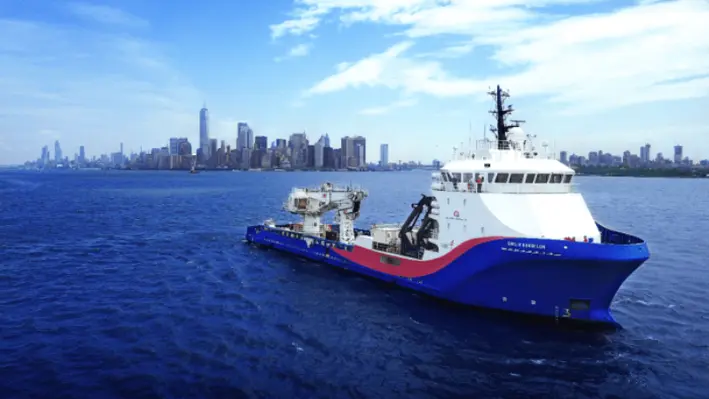

Helix Robotics Solutions, the US Robotics division of Helix Energy Solutions Group, has entered into a one-year agreement with Bordelon Marine, LLC for the charter of the DP2 Jones Act-compliant Ultra-Light Intervention Vessel (ULIV) M/V Shelia Bordelon.
While Helix expects the vessel to primarily support Inspection, repair and maintenance (IRM) operations for clients operating in US waters, it can support international work as well.
Designed as a fuel-efficient intervention vessel, the Shelia Bordelon features an NOV 50-tonne active heave compensating crane with 3,000 metres of wire, a mezzanine deck with internal offices, centralised online survey suite, offline data processing space, and two Triton 200hp ROVs with high spec survey capabilities.
With over 25 years of IRM expertise, Helix Robotics Solutions is well equipped to service clients’ light construction and renewables projects. The company performs subsea well interventions through wireline, coiled tubing, or hydraulic stimulation at project costs significantly lower than drilling rigs, with the versatility to perform both riser-based and riserless interventions.
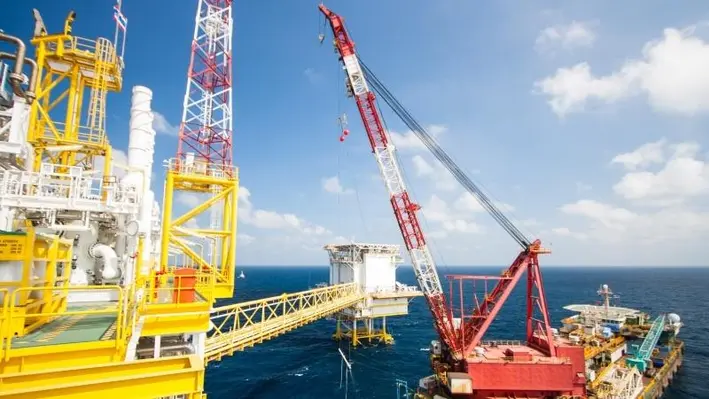
 Modern American Recycling Services, Inc. (MARS) has recently finalised the acquisition of the DP3 Diving Support Construction vessel Caballo Marango representing a substantial investment in the offshore market and further increasing the company’s footprint worldwide.
Modern American Recycling Services, Inc. (MARS) has recently finalised the acquisition of the DP3 Diving Support Construction vessel Caballo Marango representing a substantial investment in the offshore market and further increasing the company’s footprint worldwide.
The move is also said to support the continued growth of the offshore decommissioning and subsea installation industry. The vessel will be owned by MARS and operated by Shore Offshore Services, LLC.
The vessel, previously named Caballo Marango, was built at the Marco Polo Shipyard in Batam, Indonesia in 2013. MARS said that the vessel will be renamed Captain America and will maintain its Panamanian flag while following ABS guidelines. The DSCV Captain America will also be relocated to its new homeport located in Pascagoula, Mississippi, where it is scheduled to undergo the necessary service and maintenance required to get back into class by end of the year 2022.
According to MARS, Captain America will be outfitted to perform floating platform and FPSO decommissioning subsea work, small flexible flowline, cable and umbilical lay/retrieval, drilling rig equipment change, and wind farm construction. The 399-man accommodation will support decommissioning preparatory work, platform support for maintenance, field upgrades and will also be able to provide offshore support as a flotel.
The 141.7 m long vessel is equipped with a large 1500 sq m clear deck, a 480 sq m covered deck and a 100 sq m poop deck. A 1000 MT– 35000 Liebherr crane is also carried by the vessel, making it ideal for the construction of floating wind farms.
President, Dwight (Butch) Caton, Sr of MARS, USA said, “MARS is always preparing to meet the future demands of our clients and to support them in their construction and decommissioning needs. Acquiring a dive and construction vessel ensures that we are ready to serve our clients’ needs now and in the future. This investment prepares us for the increase in the market and allows us to maintain our leadership position. We are sure that Captain America will have an impressive career in the MARS fleet and it underlines our efforts to meet and exceed our customers’ requirements”.
D&A GOM 2022
At D&A GOM 2022, the offshore community is set to reunite face-to-face to discuss the challenges and opportunities marking decommissioning and abandonment in the region, listen to sessions delving into current complex situations and network to help each other optimise their strategies. To find out more, download the brochure: www.offsnet.com/da-gom/conference-brochure
Or contact:
Joseph Watson
Project Manager
Offshore Network Ltd.
t: +44 (0) 20 3409 5720
e:
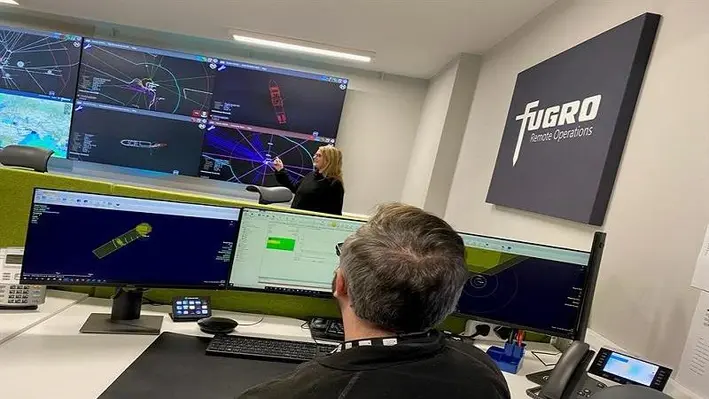

Fugro has signed a four-year agreement with Heerema Marine Contractors for survey and positioning support services onboard Heerema’s heavy lift crane vessels.
Fugro’s worldwide reach and technology offers Heerema a solid support base for their global project portfolio, ensuring optimised offshore operations that minimise environmental impact. Fugro will use their innovative vision technologies, such as QuickVision, 3Direct and InclinoCam, combined with remote services and expert teams to optimise Heerema’s offshore installation and decommissioning campaigns across Europe, the Americas, Middle East, and APAC regions.
Fugro’s survey Geo-data and positioning support will assist Heerema in identifying seabed structures and debris while providing centimetre level precision for installation projects. Real-time touchless inspection and monitoring technology offers a much safer, more efficient and sustainable solution to offshore operations.
Remote support will also enable Heerema to monitor their operations in real-time leading to faster and more informed decision-making as their projects progress.
Thijs Prins, Fugro’s Service Line Director Marine Asset Integrity, commented, “Our vision-based technologies and remote services improve staff safety, significantly reduce project complexity, accelerate turnaround times, and allow operations to be conducted in a wider weather window – critical benefits for Heerema as they complete campaigns over the next four years. We’re proud to be delivering innovative solutions that support the responsible installation, maintenance and decommissioning of offshore energy assets.”
D&A GOM 2022
At D&A GOM 2022, the offshore community is set to reunite face-to-face to discuss the challenges and opportunities marking decommissioning and abandonment in the region, listen to sessions delving into current complex situations and network to help each other optimise their strategies. To find out more, download the brochure: www.offsnet.com/da-gom/conference-brochure
Or contact:
Joseph Watson
Project Manager
Offshore Network Ltd.
t: +44 (0) 20 3409 5720
e:
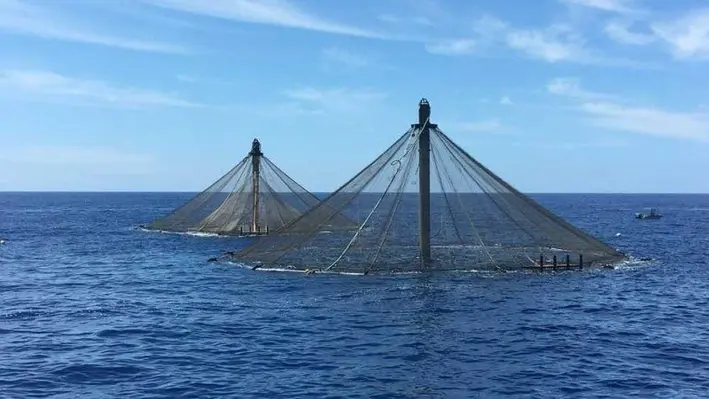

With many oil rigs being decommissioned in the Gulf of Mexico each year, plans of converting rigs for alternatives like offshore multi-trophic aquaculture (finfish, oyster and algae) production and renewable energy, has been on the cards for oilmen and fisheries alike.
US regulations already allow US Gulf of Mexico platforms to be used for other purposes, apart from oil and gas production. Right of Use and Easement (RUE) permits for alternative uses of offshore platforms have been granted in the past and these regulations would also allow for aquaculture and other marine-related activities. Leasing of Gulf of Mexico areas for wind power is expected to begin in late 2022.
Aquaculture is an increasingly important source of nutritious and sustainable seafood for people worldwide. Globally, aquaculture production must double by 2030 to keep pace with demand. This increase in demand for aquaculture products, food security considerations, and job creation has generated the need for skilled workers.
Ivan Puckett, one of the founders of Blue Silo Aquaculture LLC, while speaking to The Fish Site, said, “Our objective is to find as many uses as possible because we will need an income stream to maintain and operate the platforms. There’s enough space on these installations for several projects and the more operations we can have, the better it is.”
Aquaculture is one of the sectors they see as having the most promise for extending the useful shelf life of the platforms.
Puckett believes aquaculture is promising. “The water quality and oxygen levels are good and disease transmission is low. However, travel expenses to and from the platforms are high, the weather can be challenging, with hurricanes not infrequent and living arrangements are more challenging,” he added.
Kent Satterlee, co-founder Blue Silo Aquaculture LLC, informed that the company is planning to initially install a grid of 12 of Innovasea’s SeaStation pens and add another 12 at another platform site.
The SeaStation design includes the ability to be raised above the waterline in calm weather, exposing the netting to naturally defoul in the sunshine and then be submerged to a depth where they will avoid the full impact of any hurricanes or storm events that happen to pass.
“Innovasea also has expertise, materials, equipment and relationships to provide nearly all of the support aspects of the operation. Video monitoring, feeding systems, various marine and atmospheric monitoring devices, design and technical support, IT integration capabilities and much more,” Satterlee noted, while speaking to The Fish Site.
Puckett added that the company is looking into multi-trophic production; with a mixture of finfish, seaweed and oysters, and the University of Miami will be researching species selection.
In this scenario, the mooring grid for the SeaStation pens could also host the downlines for oysters and algae. The platform structure could also serve as host for the downlines.
D&A GOM 2022
At D&A GOM 2022, the offshore community is set to reunite face-to-face to discuss the challenges and opportunities marking decommissioning and abandonment in the region, listen to sessions delving into current complex situations and network to help each other optimise their strategies. To find out more, download the brochure: https://offsnet.com/da-gom/conference-brochure
Or contact:
Joseph Watson
Project Manager
Offshore Network Ltd.
t: +44 (0) 20 3409 5720
e:
Page 18 of 22
Copyright © 2025 Offshore Network